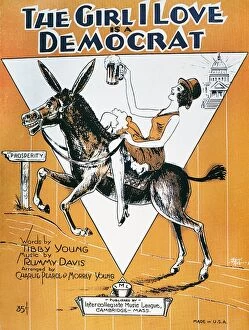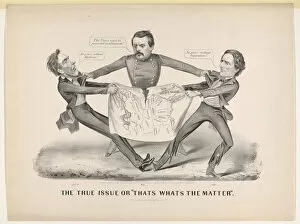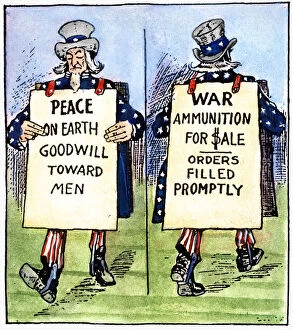Polit Collection
"Exploring the Political Tapestry
All Professionally Made to Order for Quick Shipping
"Exploring the Political Tapestry: From Sheet Music to Leaflets and Engravings" This captivating collection of historical artifacts takes us on a journey through various aspects of politics, shedding light on different perspectives and moments in time. The sheet music cover from 1932 titled "The Girl I Love Is a Democrat" serves as a reminder that political affiliations have always played a role in personal relationships. It reflects the social climate of the era and highlights how politics can influence even matters of the heart. Moving onto Colombia's struggle for independence, we encounter a leaflet proclaiming freedom. This artifact symbolizes the determination and resilience of those who fought for their nation's autonomy, showcasing the power of collective action. Carlos Manuel Endara's painting "The Republic" captures an important moment in history when nations were being shaped by new ideologies. The artwork stands as a testament to the enduring spirit of democracy and reminds us that political systems are ever-evolving. In contrast, Currier and Ives' print titled "The True Issue or 'That's What's the Matter'" transports us back to 1864 America during one of its most tumultuous periods – the Civil War. Through satire, it comments on conflicting beliefs surrounding slavery, emphasizing how deeply divided society was at that time. Jorge Juan Santacilia, a Spanish scientist and naval officer depicted in an engraving from centuries ago, represents individuals who contributed to both scientific progress and national development through their political involvement. His portrait is evidence that politics has long been intertwined with other fields such as science. Eugenio Espejo's engraving further reinforces this notion by highlighting his contributions not only as an intellectual but also as someone actively engaged in advocating for societal change during colonial times. It showcases how individuals throughout history have used their platforms to challenge existing power structures. A satirical American cartoon from World War I sheds light on Uncle Sam's conflicting desires regarding neutrality and profiteering.














